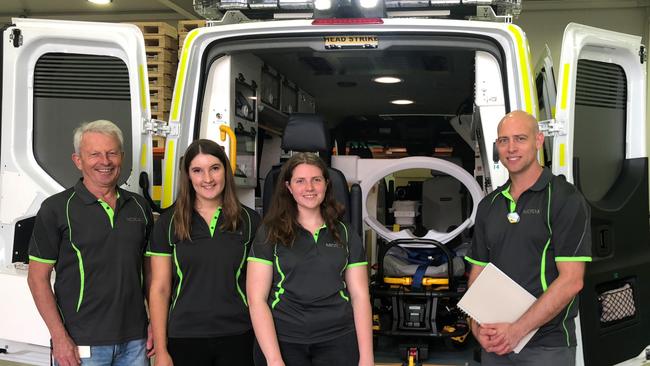Micro-X taps into uni smarts for mobile stroke scanner R&D
South Australian manufacturing and engineering expertise is being harnessed to unlock a major breakthrough in brain stroke detection as part of a national effort.

SA Business
Don't miss out on the headlines from SA Business. Followed categories will be added to My News.
- COVID-19 boost to SA medical devices maker Micro-X
- Micro-X starts making CNT X-ray tubes in South Australia
- Prizes, discounts, freebies: Check out the latest subscriber rewards
SA X-ray machines maker Micro-X is tapping into Flinders University’s pool of biomedical engineering undergraduates as it develops the country’s first mobile brain stroke detection units for ambulances and medical aircraft.
Every minute counts when a person suffers brain stroke, which occurs when blood supply to the brain suddenly stops, either due to bleeding or blockage, to prevent damage.
A CT scan is currently the only accurate way of pinpointing which one, so that medical professionals can make critical interventional decisions.
However conventional CT technology’s size, weight, and workflow prohibit the widespread deployment of Mobile Stroke Units.
Australia currently has just one, at the Royal Melbourne Hospital.
Micro-X, along with the Australian Stroke Alliance, is developing a lightweight ring scanner using carbon nano tubes, which can be installed in mobile emergency response vehicles to allow for quicker response time.
“It will be smaller, lighter and cheaper with high-speed imaging capabilities,” Micro-X’s managing director Peter Rowland said.
“It is a revolutionary product, which has global potential and has attracted attention from the John Hopkins University in the US and (imaging giant) Fuji,” he said.
A foam model has been created to showcase the potential design of an operational prototype, which will be made at the company’s manufacturing facility in Tonsley, where it also makes the world’s only carbon nanotube X-ray systems.

Flinders University biomedical engineering graduates Mia Maric and Erica Nunn are currently completing a 20-week casual placement with Micro-X, developing an algorithm to improve the resolution of the images produced from the ring scanner, which will allow accurate detection of brain bleeds.
Ms Maric said the practical experience of working within the industry was exciting.
“We are told as engineers in training that what we do matters. Being part of this project has actually help me to understand how much,” she said.
Ms Nunn said the practical experience had helped to “cement” her learning in class.
Both will receive credits towards their course.
Mr Rowland said the students were playing a pivotal role in the development by working on the “smartest bit” of the device.
Micro-X, an Australian sharemarket listed company, has already commercialised two mobile X-ray devices overseas – Carestream Nano for hospital settings and last month won a $1.4m contract through the World Health Organisation to deliver ‘Rover’, a more rugged product for emergency medical use by defence forces, to governments of a number of Pacific Island nations.
These are all made in South Australia for overseas markets.
Micro-X has applied to the Federal Government’s Medical Research Future Fund for an undisclosed amount to develop an operational prototype of its device over two years.
“As a successful manufacturer of innovative health imaging technology, we are committed to turning bold ideas into global impact,” Mr Rowland said.
“Winning the next stage of funding for this exciting project will not only improve the health outcomes of thousands of Australians.”
The device is expected to take a number of years from operational prototype to approved use in health settings, subject to various regulatory approvals.
Micro-X will also have to invest substantially in space, machinery and equipment to manufacture the devices at Tonsley.

